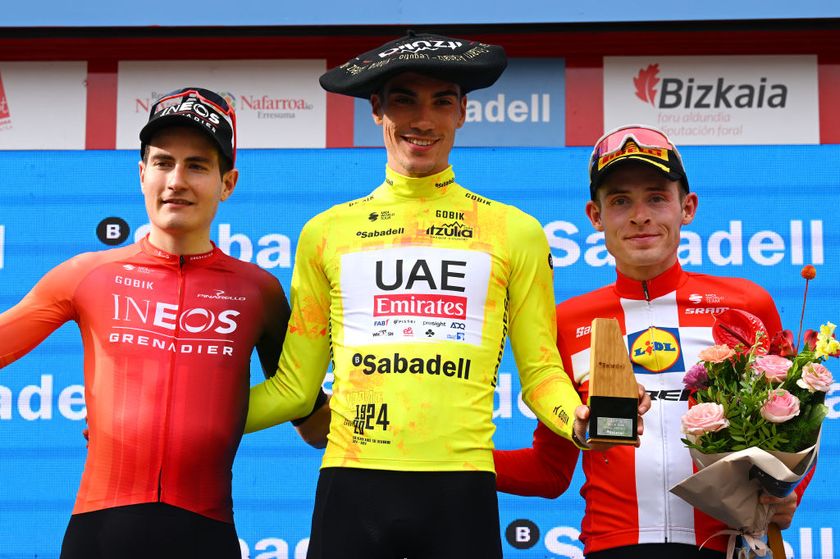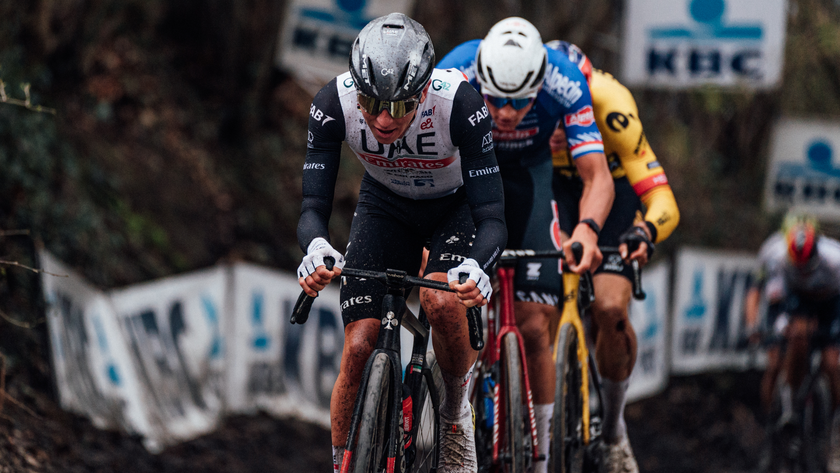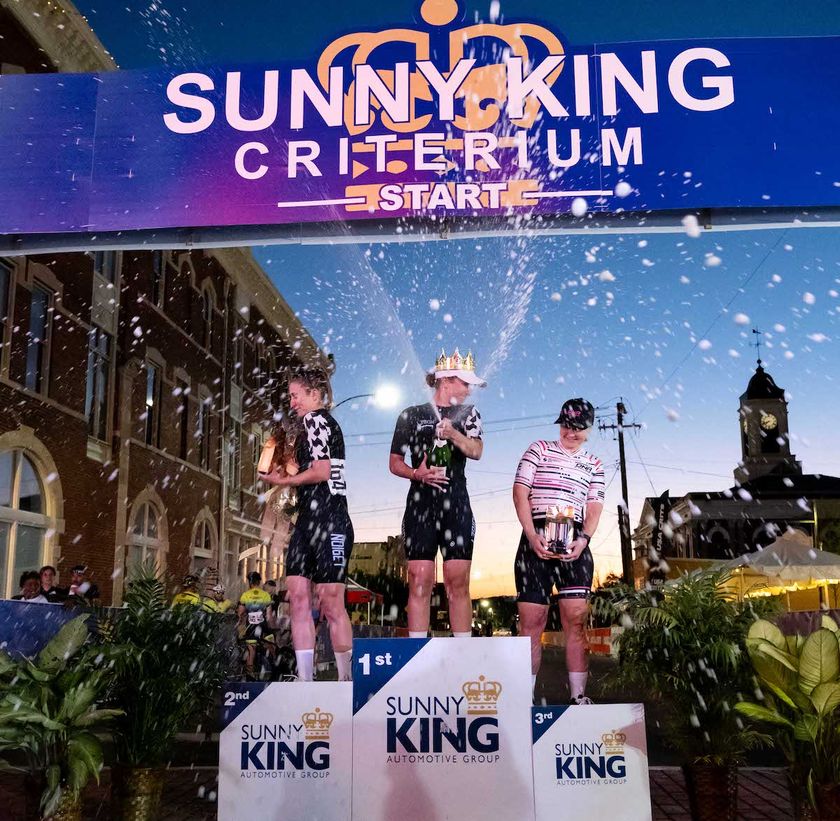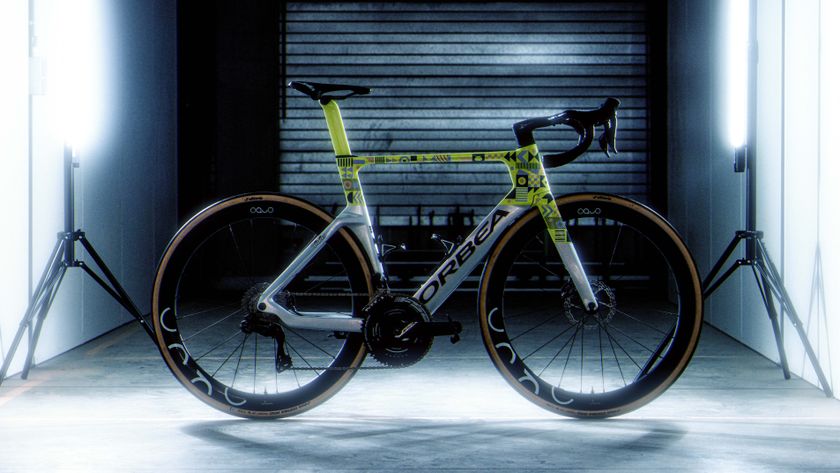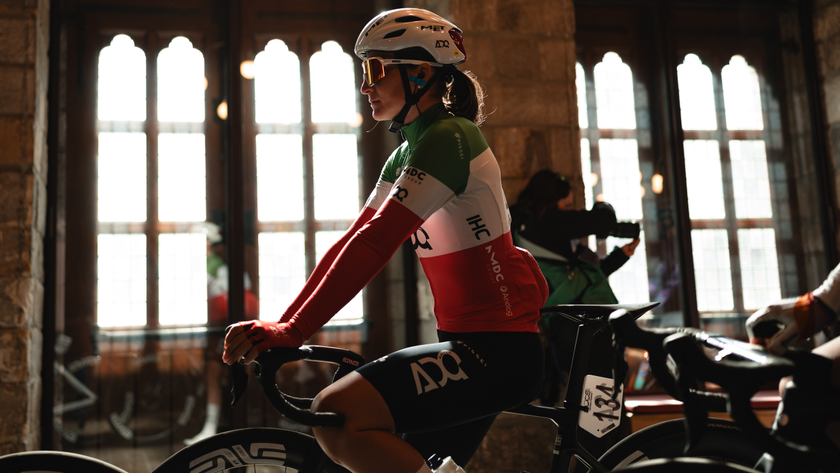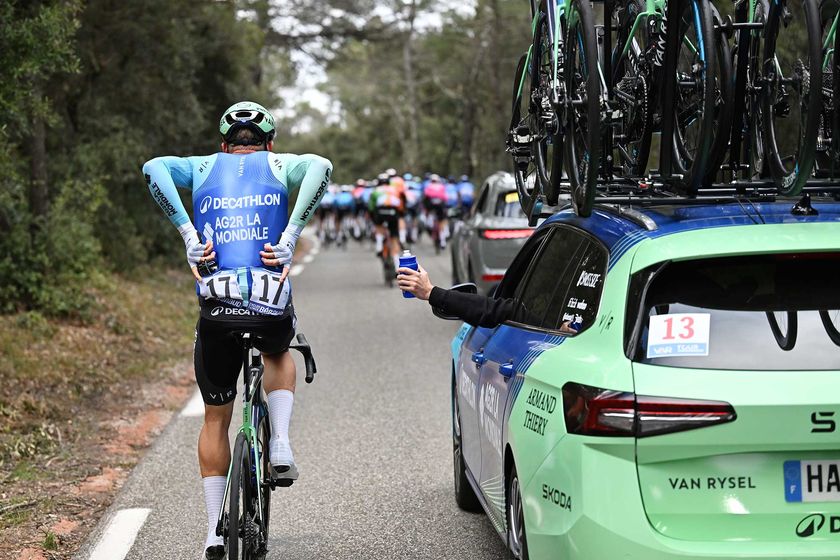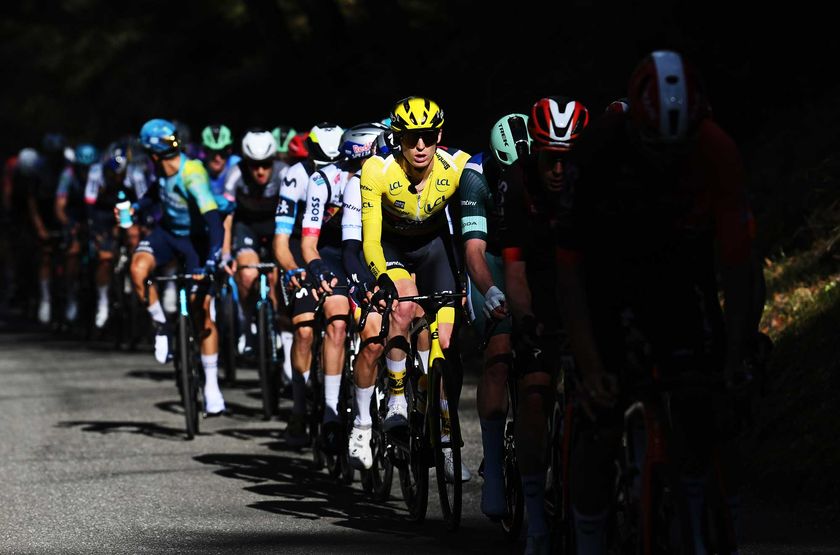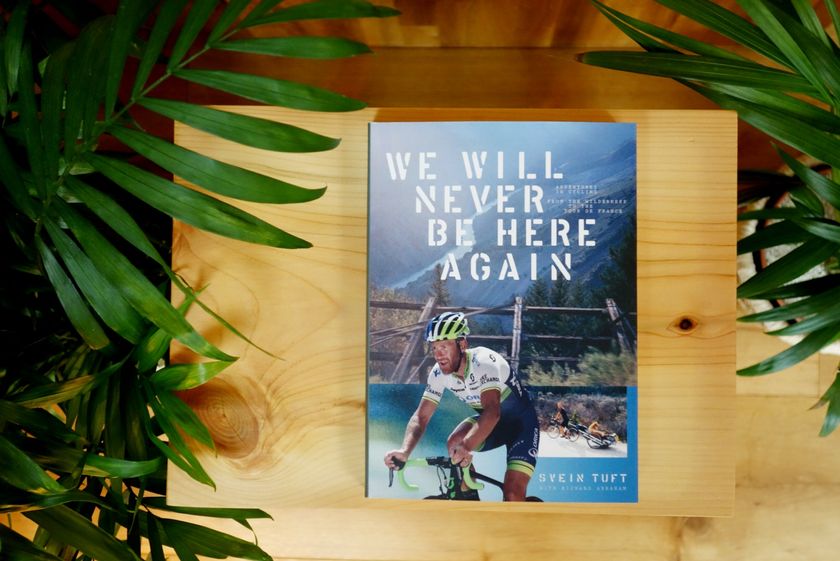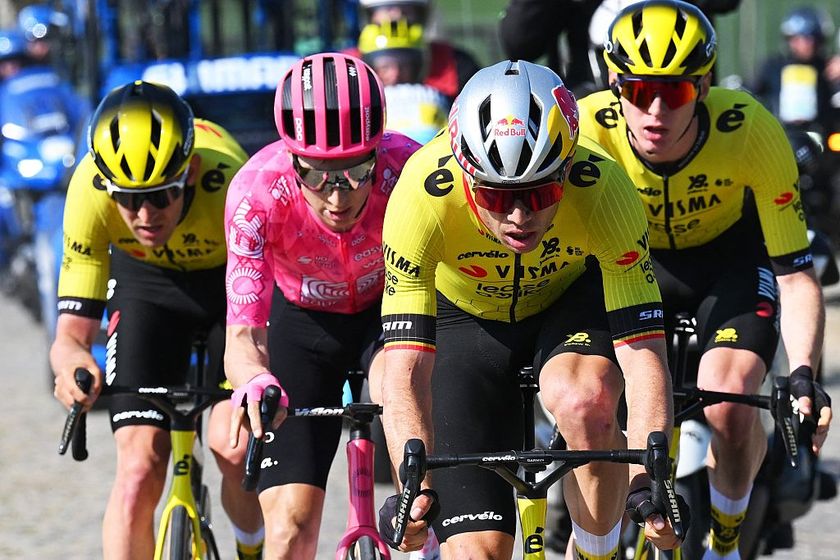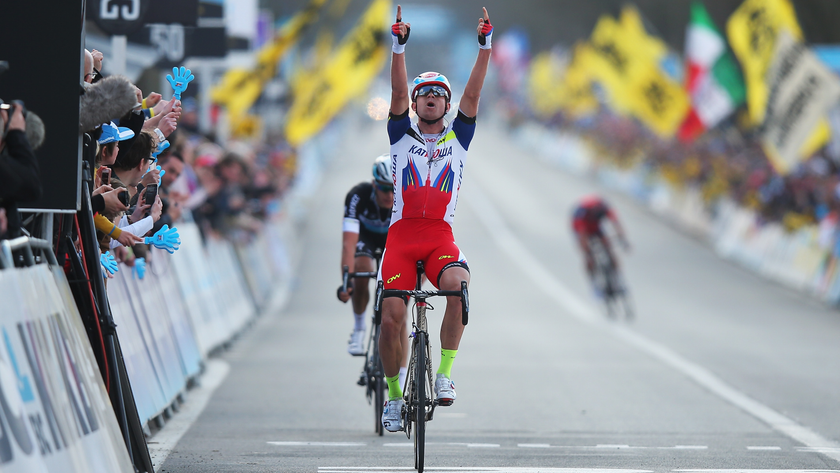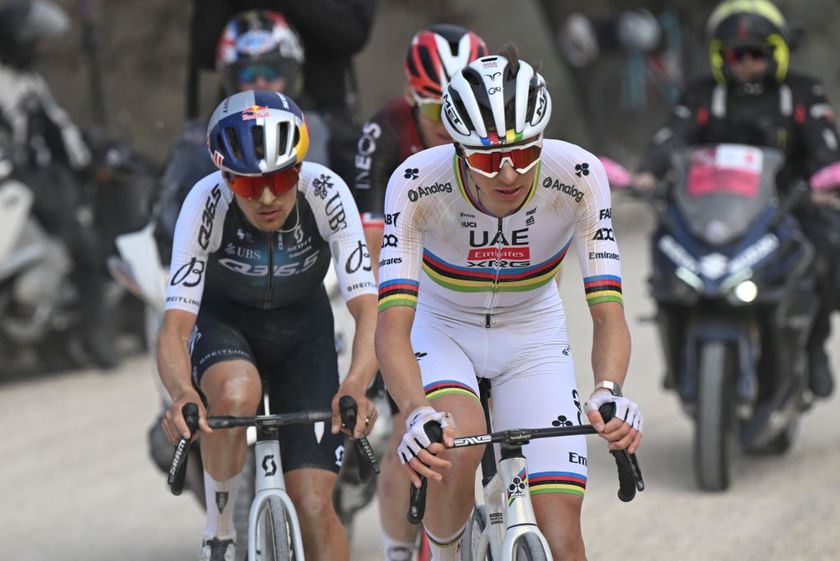Cyclingnews Fitness Q&A - October 6, 2010
Your fitness questions answered



Got a question for the fitness panel? Send it to fitness@cyclingnews.com. Emails may be edited for length or clarity, but we try to publish both questions and answers in their entirety.
Running for training
Every year as the days start to get shorter I contemplate taking up running, but I never do because I'm afraid it will negatively affect my cycling. Do any of the top pros incorporate running in their training programs? What would be the advantages or disadvantages to doing so? It would be nice to have it to fall back on when summer burnout inevitably creeps in too.
Corey
Scott Saifer says:
Corey,
In the non-racing season you can use some running as cross training to avoid getting fat, stay in the habit of regular training and maintain some cardio-vascular fitness.
Running in racing season or shortly before it will adversely affect your cycling and should be avoided. I generally recommend that in the early non-racing season, at least one training session per week be on the bike, with a gradual increase of bike days and decrease of non-bike aerobic exercise days until you are down to no more than one per week by 10 weeks before the season, and none by six weeks before the season.
Get The Leadout Newsletter
The latest race content, interviews, features, reviews and expert buying guides, direct to your inbox!
Shorter right leg
Hi Steve,
I read with great interest your response to Anton in the September 8th, 2010 fitness column. I experience exactly the same issues he describes to the letter. Your final point to him was a series of questions, which in my case I can answer but would like more information on how I can work my fit to help manage these symptoms.
You said;
1. Is your right leg shorter than your left leg?
2. When you stretch your hip flexors, are you noticeably tighter on
the right side than on the left side?
3. Do you have any negative reaction to milk products, wheat products
or other food types?
My answers;
1. I believe it to be functionally shorter than my left due to a pronounced roto-scoliosis. Without getting into the angles present in my spine I certainly note when I walk that I tend to bob from side to side. Neither fitter I have worked with has felt comfortable exploring this possible functional difference.
2. I am noticeably tighter on my right side as a result of this roto-scoliosis. I purposely and thoughtfully spend extra time stretching this side, though am wondering if incorporating some yoga into my week on a regular basis would also help.
3. I am mildy lactose intolerant though can handle yogurt cultures. No other allergies or intolerances that I am aware of, though will be experimenting with reducing my wheat intake as a result of a repeated series of skin blemish breakouts which my doctor believes may be due to gluten intolerance of some sort.
I have gone through two detailed fits with different fitters, with varying degrees of success. More set-back and a slightly lower saddle have helped, but not eliminated the symptoms.
I have never worked with anyone who has a sound understanding of musculature and body structure (and really, shouldn't all fitters either be deeply interested in this or have some sort of human kinetics background?), so am keen to hear your thoughts on further measures.
Many thanks,
Michael
Steve Hogg says:
Michael,
Difficult question to answer with a rotoscoliosis causing a functional short leg. The best I can do is give you a general answer. Basically you have to eliminate or reduce any challenge to your position.
A challenge is any factor that challenges the rider's stability or symmetry on the bike. Challenges fall into three broad categories: Positional, Functional and Neurological.
Positional Challenges are issues like poor seat position, bar location or cleat position. Functional Challenges are matters like differences in limb length, an asymmetric pattern of flexibility, differences in foot morphology between left and right sides and so on. Neurological Challenges are matters like a pattern of cerebella hemispheric motor control dominance, suboptimal proprioceptive feedback from the parts of the body involved in applying force to the pedals, neurological deficits and similar issues.
All challenges inherently reduce efficiency and performance and increase the tendency to injury. Any challenge to the position causes the rider to develop a pattern of compensation. By nature, the compensatory responses evoked by a challenge further increase the rider's tendency to asymmetry which is antithetical to the desirable goal of as high a level of functional symmetry as possible while cycling.
In addition, compensatory patterns don't solve a problem; they merely shift the load elsewhere. The central nervous system is adept at allowing the body to compensate for a less than perfect interaction with the bike but has no way of predicting the long term consequences of compensating for a challenge without being consciously aware of the situation.
It is this lack of 'predictive foresight' (caused by incomplete proprioceptive awareness) that increases the chance of injury over time. In practice there are multiple and overlapping challenges and compensatory responses present in any individual case.
As you have had two fits, I'm hoping that all or most of the Positional Challenges have been addressed. I would guess that the basic issue on the bike from which most other issues flow is the inability to sit squarely on the seat. From what you have said, you show plenty of Functional Challenges, with the rotoscoliosis and tighter right side. You also mention lactose intolerance and possible wheat intolerance. This may be linked to your scoliosis I say VERY cautiously.
I have seen instances of rotoscoliosis lessening dramatically when ALL milk and wheat products were eliminated totally. I am not a scientist and don't pretend to know the reasons for why but I would at least explore the possibility. Food senstivities may play a part in your right side pattern of tightness that you attribute to the rotoscoliosis too.
I've lost count of the number of people with food sensitivities whose right psoas tightens noticeably if they eat anything that they don't tolerate well. Sometimes the person experiencing this isn't aware that there is a problem in the sense that they don't show any of the common symptoms of being touchy with wheat or milk products.
Over many years I've found a number of physiotherapists, masseurs and chiropractors who have noted the same thing. So give it a try and eliminate anything from your diet (including yogurt) that may play a part in this. No guarantees, but doing so may help you sit more squarely over time.
Regarding the yoga - sure, why not. I used to go to yoga classes for years but have found a small book "Flexibility for Cyclists' by Fred and Kele McDaniel to be more time efficient for similar results.
I don't know enough about you to go into any detail about Neurological Challenges but the one thing I will say is get hold of some BFS cleat wedges and experiment. The reason that I say this is as I mentioned above, any challenge to a rider's position evokes a compensatory response. All compensatory responses work by increasing the rider's tendency to asymmetry.
Often this takes the form of twisting the pelvis to varying degrees to one side to protect one side (usually but not always the right) but paying a price in pain, strain or discomfort elsewhere). The most common NC I see is poor proprioceptive awareness of the feet. Correcting the cant of the feet is necessary to restore this.
The easiest and most effective method of experimentation are BFS cleat wedges. Well-prescribed orthoses will also do the trick but almost every pair of cycling orthoses that I have seen have been prescribed after watching the rider walk or run. The lack of heel contact in a pedaling stroke compared to when walking/running changes the foot mechanics and loading and which means that the majority of the time, a differing amount of correction is necessary for cycling than walking/running.
As to your last point, I agree but bikefitting is an evolving job and there is a lack of good information and training, though there are some notable attempts to address this. The basic issue is that a good bikefitter needs a decent knowledge of functional anatomy as well as bikes and bike equipment. In percentage terms, there aren't/don't seem to be a lot of people out there like that.
FTP query
This is sort of a similar question to the one answered in the September 24 Fitness Q&A.
I did a full hour-long FTP test on the trainer and had an average power output of 300 watts (normalised was 301). Then a few weeks after that I did a Pro/1/2/3 crit with two big hills every lap and finished with average power of 266 watts but normalised power of 344 watts - way above the 301 I did under controlled conditions.
Which number should I use as a baseline for all of the tempo/threshold/VO2Max, etc. intervals, the 301 or the 344? It is such a wide number (120 percent of 344 is 412 watts - not so repeatable but 120 percent of 301 is 361 - very repeatable).
Thanks guys, read all of the columns, really appreciate it.
Brad Shipley
Dave Palese says:
Brad,
You want to use the 301 average.
Normalised power and average power are looking at the intensity and work you are doing from two different perspectives.
Average Power looks at the actual mechanical (muscular) work done over a period of time and them averaged using a number of samples.
Normalised Power is a metric for quantifying the physiological effect of an effort. NP is a way to better view how hard a ride really was. Not just how hard and how often you pedaled.
The actual power measured in watts fluctuates greatly, as you know from looking at your files, but the body's systems don't turn on and off or switch from one to the other just because you stop pedaling on a descent after a hard hill. It's this difference that normalised power represents.
So hopefully you can see that you should use the Average Power measured in your test versus the Normalised Power from the crit. You want to set-up your training levels to reflect the mechanical work you are capable of doing.
This all said, I would encourage you to do another testing session using a shorter test effort. Try 20 minutes and subtract five percent from your Average Power during that effort. See if it aligns well with your one-hour number.
I've found that except for the most motivated riders, a solo one-hour effort as a test yields a low FTP estimation. One exception to this is if the effort is recorded during a competitive time trial. But even then, only the most motivated riders will yield the most accurate numbers.
I hope this helps. If you have further questions, let me know. Have fun and good luck!
Climbing drills for steep hills
Hello,
I am a 30 year old cycling enthusiast. Up until a couple of years back, I would put in a lot of climbing miles spaced with some hard group rides.
Fast forward a few years work, and other priorities have taken over; now I just do 2-3 rides a week. Two rides are to work and a 30-mile ride on the weekend. The weekend ride is solo and includes 4-5 x 0.8 mile hill repeats (average of six percent and max of eight percent) gradient.
On the long weekend, I had an extra day to ride so I went and tried this hill that I could climb twice when I was riding regularly. Seven percent average for 5.3 miles. Steepest parts at 18 percent.
The problem is: I found that it took me an additional 10 minutes than when I was climbing regularly. Also, I felt like giving up on the climb.
My question: Is there a way with limited time to maintain my power output for such tough climbs with the training I do?
Thanks,
Andy
Scott Saifer says:
Andy,
The short, brutal and unpleasant answer is, "No", although it's not so much the lack of climbing in your current plan that is holding you back as simple lack of hours, unless you live a really long way from work.
If you are doing 2-3 rides per week, having one of those be a climbing ride is about right to optimise fitness. The challenge is that when volume is low, recovery is poor, so if you make all rides hard rides, you'll never be well recovered and your training will not make you much stronger.
If you make some of the rides easier on a low volume schedule, you still won't get that much stronger, but at least you'll feel decent most of the time.
On the other hand, if you go to your test hill and climb it once a week for a month or so, I bet you can getup it without wanting to stop at least.
MTB shoes and mid foot cleat positioning
Hello,
I have been both road/MTB riding for around 20 years and have suffered from sore toes on both feet as a result of 'dropped metatarsals' when doing long rides (over three hours).
I have been using an orthotic made by a local podiatrist specifically for this problem. The orthotic does help to some extent but in honesty it only delays the onset of pain slightly. As the riding season progresses (i.e. more time and kilometres spent on the bike) the worse the problem gets (pain starts sooner).
As a result I have been considering the mid foot cleat position idea and would like to know how successful this ideology applies to mountain biking and if anyone can recommend a specific mid sole cleated shoe suitable for MTB XC, marathon and stage type events. It would need to be shoe that will stand up to the rigours of mountain biking and the occasional off road get off or portage.
I have checked the Biomac web site and see that they offer a mtb shoe but unfortunately I could not find a picture or further information on it. If it looks anything like the road or tri version then I fear it will be too delicate for a mtb stage race type of event where some off road walking could be expected.
Currently I use Time ATAC pedals with a Specialized BG shoe (2005 model, non carbon sole) and would not be averse to modifying the shoes myself, however, I'm not sure if the shape of the sole (not flat) would accommodate such a modification and would prefer to buy a new shoe built specifically for this purpose.
Your suggestions or ideas are appreciated.
Thanks,
Jack
Steve Hogg says:
Jack,
The only mtb shoe that I'm aware of that is made for midfoot cleat position is the Biomac and yes, it is much more robust than the road model. Being custom made they can be made in any preferred weight and strength.
Regarding production shoes - it isn't that hard to modify an appropriate mtb shoe for midfoot cleat position but you have to find a shoe with the right sole type. Which means a carbon sole where there is a flat section in the midfoot to mount the cleat. If you are handy with a drill and can source some eyelets it shouldn't be too hard for you.
If you follow through with either option you will need to drop your seat somewhere between 30 - 40 mm (though I've seen instances of more and less than that range) and your bars half to two thirds of that. With road bikes, toe overlap can be an issue but with the longer front centres of mountain bikes it is rarely a problem.
The Cyclingnews Form & Fitness panel
Scott Saifer (www.wenzelcoaching.com) is head coach, CEO of Wenzel Coaching.com and has been coaching cyclists professionally for 18 years. He combines a master's degree in Exercise Physiology with experience in 20 years of touring and racing and over 300 road, track and MTB races to deliver training plans and advice that are both rigorously scientific and compatible with the real world of bike racing.
Scott has helped clients to turn pro as well as to win medals at US Masters National and World Championship events. He has worked with hundreds of beginning riders and racers and particularly enjoys working with the special or challenging rider. Scott is co-author of Bike Racing 101 with Kendra Wenzel and his monthly column appears in ROAD Magazine.
Steve Hogg (www.cyclefitcentre.com) has owned and operated Pedal Pushers since 1986, a cycle shop specialising in rider positioning and custom bicycles. In that time he has positioned riders from all cycling disciplines and of all levels of ability with every concievable cycling problem. Clients range from recreational riders and riders with disabilities to World and National champions.
Kelby Bethards, MD received a Bachelor of Science in Electrical Engineering from Iowa State University (1994) before obtaining an M.D. from the University of Iowa College of Medicine in 2000. Has been a racing cyclist 'on and off' for 20 years, and when time allows, he races Cat 3 and 35+.
He is a team physician for two local Ft Collins, CO, teams, and currently works Family Practice in multiple settings: rural, urgent care, inpatient and the like.
Pam Hinton has a bachelor's degree in Molecular Biology and a doctoral degree in Nutritional Sciences, both from the University of Wisconsin-Madison.
She did postdoctoral training at Cornell University and is now an associate professor of Nutrition and Exercise Physiology at the University of Missouri-Columbia where she studies the effects of energy balance on bone health. She has published on the effects of cycling and multi-day stage racing on bone density and turnover.
Pam was an All-American in track while at the UW. She started cycling competitively in 2003 and is a three-time Missouri State Road Champion.
David Fleckenstein, MPT, OCS (www.physiopt.com) is a physical therapist practicing in Eagle, ID and the president of Physiotherapy, PA, an outpatient orthopedic clinic focusing in orthopedics, spine, and sportsmedicine care.
His clients have included World and US champions, Olympic athletes and numerous professional athletes. He received his Masters degree in Physical Therapy from Emory University and is currently completing his doctorate at Regis University.
He is a board certified orthopedic specialist focusing in manual medicine and specific retraining of spine and joint stabilisation musculature. He is a former Cat I road racer and Expert mountain biker.
Carrie Cheadle, MA (www.carriecheadle.com) is a Sports Psychology consultant who has dedicated her career to helping athletes of all ages and abilities perform to their potential. Carrie specialises in working with cyclists, in disciplines ranging from track racing to mountain biking. She holds a bachelors degree in Psychology from Sonoma State University as well as a masters degree in Sport Psychology from John F. Kennedy University.
Dave Palese (www.davepalese.com) is a USA Cycling licensed coach and masters' class road racer with 16 years' race experience. He coaches racers and riders of all abilities from his home in southern Maine, USA, where he lives with his wife Sheryl, daughter Molly, and two cats, Miranda and Mu-Mu.
Dario Fredrick (www.wholeathlete.com) is an exercise physiologist and head coach for Whole Athlete™. He is a former category 1 & semi-pro MTB racer. Dario holds a masters degree in exercise science and a bachelors in sport psychology.
